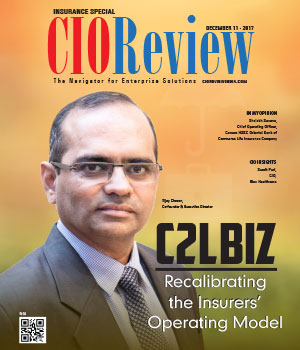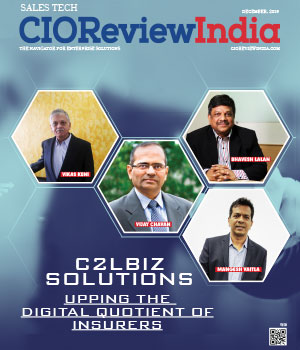
Driving Insurance Agent Productivity with Mobile and Big Data Solutions
Brad Bodell, SVP & CIO, CNO Financial Group, Inc | Wednesday, 05 October 2016, 10:41 IST
 Life and health insurance agents in the U.S. live in a bit of a quandary in this ever-changing industry. The need for professional advice has never been more critical for consumers trying to navigate changes in health care laws and insurance regulations, to understanding savings options in annuities and other complex retirement instruments.
Life and health insurance agents in the U.S. live in a bit of a quandary in this ever-changing industry. The need for professional advice has never been more critical for consumers trying to navigate changes in health care laws and insurance regulations, to understanding savings options in annuities and other complex retirement instruments.
According to a November 2014 study by the Bankers Life Center for a Secure Retirement, eight in 10 (83 percent) middle-income Boomers have not received any specialized training or education on topics related to retirement financial security.
Yet insurance agents are increasingly more challenged in finding customers who have interest in meeting or speaking with them. Telephone solicitation rules and compliance requirements make getting in touch with customers that have a genuine need for insurance or retirement products more difficult. Moreover, a majority of insurers now sell many of these products over the phone or online—bolstering the harsh reality of how hard the role of an agent has become.
In the future, I believe a true omni-channel experience will continue to develop in the life and health insurance industry. Carriers need to be able to allow customers to buy via the channel of their preference, and in this I see a strong role for agents to continue to deliver the advice and guidance that many Americans need to navigate the health, wealth and protection offerings that exist today.
How can technology help insurance agents improve their productivity and help bring this needed advice to an underinsured U.S. population?
I believe there are some current and potential future opportunities that insurance carriers can take to differentiate themselves as the “channel of choice” for consumers:
Mobile
Mobile solutions are at the heart of the future for insurance agents. A few key features mobile agents of the future could use include:
Online and Offline Access: Agents need to be able to operate both online and offline regardless of cellular or Wi-Fi access. While online capability is certainly preferred, service is not yet ubiquitous across the U.S. I recommend carriers create minimum capability that is available offline.
Mirrored Capability: With the cost of tablets dropping, I like the idea of having an agent carry two tablets. One tablet is for the prospective customer and the other is for the agent. The agent and prospect could review needs analysis tools together as well as review product information and product illustrations. The mirrored capability removes the need to huddle around one laptop or one tablet to demonstrate a carrier’s products
or services.
Video Enabled: Using video to connect a prospective customer to product experts that can help with needs analysis and answer product questions helps position the agent as an expert in its field but also demonstrates that there is an entire firm supporting the agent. In addition, enabling the prospect to connect with underwriting or policyholder services directly via video can improve satisfaction in both the sales process and post-sales process.
Personalized Experience
The “kitchen table” meeting of the future has to move away from standard product brochures and blank need assessment forms to providing a fulfilling and personalized customer experience. With access to the right internal and external data, agents can prepare for these meetings in advance to further personalize the experience for prospective customers.
Big Data
Use big data to enhance needs analysis tools. While online tools exist to help plan for many financial needs, much of the work can be done in advance of the meeting with consent of the client. Imagine field support teams preparing a customized needs analysis questionnaire, on which the prospect’s name, address and other information we retrieve from third-party resources is already populated. The client can then confirm and clarify his individual situation during the experience. With big data, there is less asking and more confirming.
What steps does the IT organization need to take to prepare to implement these types of capabilities?
Consolidate internal
Data resources: For years, life insurers have stored information about policyholders and their preferences across both administration systems and expensive data warehouses. Insurers need to embrace big data solutions to get customer information in a consolidated solution that can embrace both structured and unstructured data.
Provide analytics framework: IT needs to continue to enable the analytics of existing policy holder information so it can be accessed more easily by marketing, underwriting and the field support organizations.
CIO Viewpoint
Insurance Tech Trends: Moving from Brick to...
By Dheepak Rajoo, Chief Information Officer, Royal Sundaram General Insurance
Easing the access to insurance with...
By Ayan De, Chief Technology Officer, Exide Life Insurance
Does an Organization's Digital Journey Warrant...
By Mudit Agarwal, Global IT Head, Uflex
CXO Insights
Significance of Customer-centric Digital...
By Janifha Evangeline
How tech will shape insurance operations in...
By By Ayan De, Chief Technology Officer, Exide Life Insurance
Transforming the Insurance Sector with Low Code




.jpg)
.jpg)





